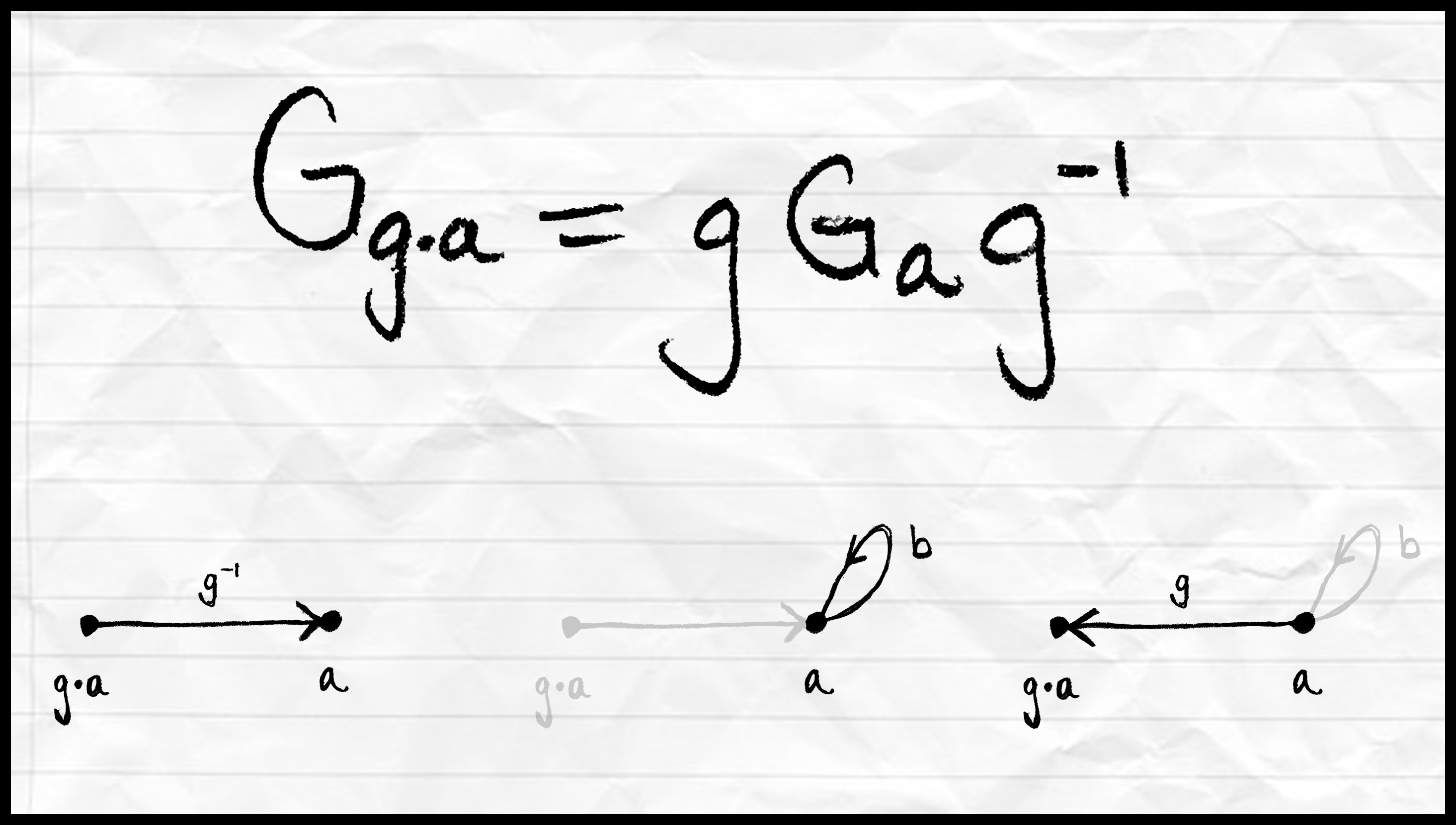A Little Fact From Group Actions

Today we've got a little post on a little fact relating to group actions. I wanted to write about this not so much to emphasize its importance (it's certainly not a major result) but simply to uncover the intuition behind it.
Let a group G act on a set A. We define the stabilizer of an element a∈A to be the set of all elements in G which fix (stabilize) a and denote it by Ga: Ga={g∈G:g⋅a=a}. It's a fact that Gg⋅a=gGag−1 which is to say, "the stabilizer of g⋅a∈A equals the conjugate by g∈G of the stabilizer of a∈A." Now, if you're like me, you've got two looming questions: What? and Why?
What?
The equality above answers the question, "How can I fix an element in A that has already been moved around by some element in G?" In other words, you're given a∈A and you let G shuffle all the elements of A so that the little a moves to another element g⋅a. Now suppose you have Ga at your disposal, i.e. you know how to fix a. But suppose you want to know how to fix the new guy g⋅a. How would you do it? Here's how:
Step 1: Send g⋅a back to a by letting g−1 act:

Step 2: Fix a by letting any b∈Ga act:

Step 3: Send a back to g⋅a by letting g act:

And there you have it! The element gbg−1 with b∈Ga fixes g⋅a. That's all that's going on here. With this intuition in mind, let's prove it formally (i.e. answer the question Why?).
Why?
As usual, we prove the equality Gg⋅a=gGag−1 by showing containment both directions. To begin let b∈Ga so that b⋅a=a. We wish to show gbg−1∈Gg⋅a. But this is immediate: gbg−1⋅(g⋅a)=(gbg−1g)⋅a=(gb)⋅a=g⋅(b⋅a)=g⋅a. Since gbg−1 fixes g⋅a it follows that gbg−1∈Gg⋅a and so gGag−1⊆Gg⋅a.
For the other direction, we'll use a little trick. Let h=g⋅a so that a=g−1⋅h. Then by the above paragraph we know g−1Ghg⊆Gg−1⋅h. But the left hand side is equal to g−1Gg⋅ag, and the right hand side is equal to Ga. Hence g−1Gg⋅ag⊆Ga and therefore Gg⋅a⊆gGag−1.
QED!
